If you have a goal of weight loss, you’ll want to proceed with caution. If you lose too much too quickly, you’ll end up fatigued and having burned your muscle mass. Move too slowly, and you may become discouraged and fall off. And any weight loss journey may be accompanied by excessive exercise or disordered eating habits, which are definitely something you’ll want to keep yourself safe from.
A big part of the equation is moving more (while listening to your body’s limits), and for that, we’ve outlined the best exercises for weight loss. The choices on our list are largely accessible, generally lower-impact, and compatible with many of the best weight loss programs.
“Remember that your worth is not determined by the number on the scale,” says BarBend expert and registered dietitian nutritionist Chelsea Rae Bourgeois. “Approach your weight loss journey with a mindset focused on overall health, and you’ll be more likely to see sustainable results. And don’t be afraid to rely on the help of certified personal trainers and registered dietitians.“
Key Takeaways
- Running, jumping rope, and cycling are the exercises that burn the most calories per hour to promote weight loss.
- Aim for at least 300 minutes of activity each week for short-term weight loss. (1)
- Running has the potential to burn over 1,000 calories per hour, but many factors affect this number, such as how fast you run and how much you weigh.
- Ultimately, exercises that burn the most calories and increase your heart rate are most effective for short-term weight loss.
- Nutrition is arguably more important when it comes to losing weight. You often need to be in a caloric deficit if your goal is to lose weight. Make sure you consult a nutritionist to make sure your diet and caloric deficit are sustainable and healthy.
Top 9 Exercises for Weight Loss
Looking to lose weight? We have you covered with our expert-curated list of the nine best exercises to lose weight. We’ll elaborate on them below along with some insights on the role calorie-burning plays in weight loss.
Exercises That Burn The Most Calories
The Mayo Clinic recommends that adults get at least 150 minutes (two and a half hours) and as much as 300 minutes (five hours) of moderate weekly exercise. (1) This will help improve your health regardless of any weight loss or gain. But if your goal is to burn more calories, we rounded up the nine best exercises for weight loss, and the chart below — sourced via Harvard Health — depicts approximately how many calories each can burn per hour. (2)

First, a few notes:
- The calories burned listed below are based on an hour of straight exercise.
- Weight is a significant factor in your caloric burn. If you weigh less than 155 pounds, you’ll burn fewer calories. If you weigh more than 185 pounds, expect to burn more than what’s listed below.
- Moderate and vigorous exercise is defined by your heart rate relative to your max heart rate. Moderate exercise is when your heart rate is at 50 to 70 percent of your max, while a heart rate between 70 to 85 percent of your max is considered vigorous exercise.
| Calories Burned Per Hour for a 155 lb. Person | Calories Burned Per Hour for a 185 lb. Person | |
|---|---|---|
| Running (10mph or a 6-minute mile) | 1,124 | 1,342 |
| Running (7.5mph or an 8-minute mile) | 900 | 1,050 |
| Jumping Rope | 842 | 1,006 |
| Vigorous Cycling, Stationary | 556 | 882 |
| Vigorous Rowing on Machine | 738 | 880 |
| Swimming, Vigorous | 720 | 840 |
| Mountain Biking | 612 | 714 |
| Calisthenics, Vigorous | 612 | 672 |
| Jogging (5mph) | 576 | 672 |
| Moderate Cycling, Stationary | 504 | 588 |
| Moderate Rowing on Machine | 504 | 588 |
| Swimming, Moderate | 432 | 504 |
| Weightlifting | 432 | 504 |
| Brisk Walking (3.5mph) | 266 | 318 |
Best Aerobic Exercises for Weight Loss
1. Running
Before the word “exercise” was a part of the human vernacular, our ancestors ran to escape predators, hunt prey, and return to shelter before sunset. Nowadays, running isn’t a necessity for survival, but it’s still one of the best cardio exercises for weight loss. The health benefits of running for weight loss include stronger leg and core muscles, more aerobic (aka cardiovascular) capacity, and less stress and anxiety. (3)
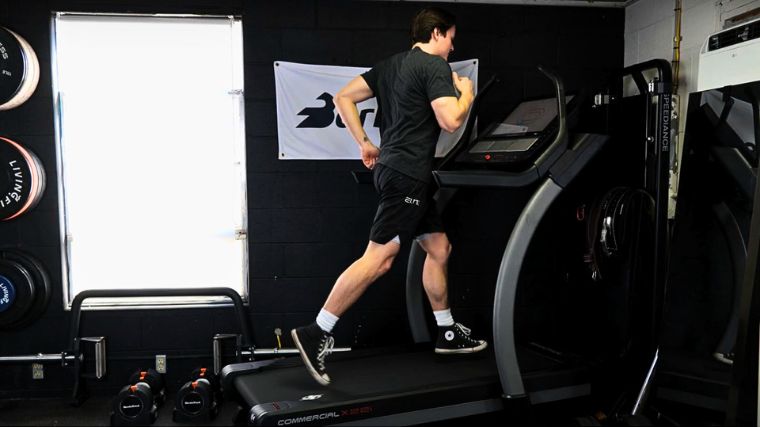
The faster you run, the more calories you’ll burn, but that’s easier said than done. For example, few people can maintain a 6-minute mile pace for an entire hour (which burns about 1,300 calories, per the above chart). If you’re new to running, your speed will be closer to a jog, which burns between 500 and 700 calories per hour, depending on your weight.
[Related: How Does Running Change Your Body?]
“Start slower than you think you need,” says BarBend expert and certified personal trainer Jake Dickson. “For heavier folks, bodybuilders, or those without running experience, the best method to acclimate to the demands of running is to perform high-frequency, low-volume runs.”
Dickson suggests starting with intervals: Alternate between 60 seconds of brisk walking and 20 seconds of jogging. As you progress, add seconds to your jogging time. For example, 60 seconds of walking the following week would be followed by 30 seconds of jogging the following week and then 45 seconds the week after.
2. Jumping Rope
You only need 5 square feet and one of the best jump ropes to start torching calories. Jumping rope is one of the best workouts to lose weight, according to Harvard Health. (2) Other notable benefits include enhanced hand-eye coordination and stronger calf muscles.
If you’re new to jumping rope for weight loss, try mimicking the movement without a rope. It sounds silly, but that’ll help you get comfortable with the movement mechanics, which include simultaneously hopping up and down while rotating your wrists.
Focus on maintaining slow rotations for a set period of time — try 10 minutes to start. Try to increase the speed of your skips until you can maintain a brisk pace for 10 minutes, and then try adding time to your jumping sessions. Once you’re comfortable, you can also add movements like crossovers and double-unders to make your jump rope workout more difficult.
Athletes with larger breasts may have difficulty with jumping rope due to an abundance of breast tissue. Alternatives include rapid calf raises and quarter squats.
3. Cycling
Are exercise bikes good for weight loss? Absolutely. And there’s more than one way to cycle for weight loss. You can hop on an exercise bike or dust off the mountain bike in your garage. Whichever option you choose, the benefits of cycling are the same: More leg muscle, improved cardiovascular (aerobic) health, and, of course, serious caloric burn (with stationary cycling being the most effective). (4)
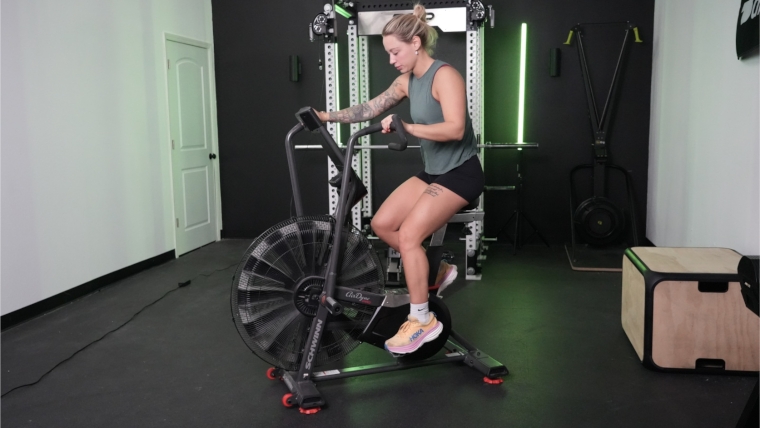
You can do intervals or maintain a constant pace for a set period of time, like 30 minutes to an hour. For intervals, we suggest setting a timer for 20 minutes and pedaling at a moderate intensity for 60 seconds, followed by 30 seconds of all-out effort. Either way, you’ll be sure to reap the benefits of cycling.
4. Rowing
If you have ever taken a CrossFit class, you’ve likely been subjected to the grueling experience of the rowing machine. You sit down on the seat and drive with your legs to row the handle to your chest, fighting against the fan that makes each pull harder as the workout progresses. The result? About 750 to 850 calories burned per hour, though we doubt you’ll last that long.
Rowing for weight loss is a prime choice. You’ll tax major muscles (legs, back, and arms), build an elite cardio engine, and burn so many calories. It’s a relatively safe exercise, too, minimizing joint impact and locking into a single plane of movement. Simply put: There aren’t a lot of ways to hurt yourself on a rowing machine.

Most gyms have rowing machines, and there are plenty of rowing workout for beginners to get you started. We suggest starting with this 15-minute workout to get the hang of things.
| Warm-Up | 3 minutes at a moderate pace |
| Ascending | 5 minutes of rowing at 20 to 22 SPM |
| Top | 5 minutes of rowing at 24 to 26 SPM |
| Descending | 5 minutes of rowing at 20 to 22 SPM |
| Cool Down | 3 minutes of rowing at a moderate to slow pace |
Note: SPM stands for strokes per minute.
5. Swimming
Swimming may be the lowest-impact exercise on this list. Compared to running and cycling, your joints experience zero impact as you glide through the water, making it a great exercise for older adults or other athletes looking to minimize injury risk during their off-season.
It’s still one hell of a workout, though, burning between 700 to 800 calories per hour of vigorous swimming and working nearly every muscle in your body, from your back to your legs to your shoulders. The only hang-up? You do need access to a pool, so it’s not as accessible as the other workouts on this list.
To get started, you’ll want to devise a swimming strength workout. This doesn’t have to be complicated. Try setting a timer for 20 minutes and performing as many laps as possible, resting as needed. And try different strokes to target different muscles.
6. Brisk Walking
Does walking help you lose weight? Absolutely. Walking an average of 10,000 steps daily helped me lose 30 pounds over a year. Although it doesn’t burn as many calories as intense exercise like cycling, swimming, or running, walking is easy to do and stick with.
“There’s no big secret to efficient walking for weight loss, but if you want to maximize its health benefits try to walk for roughly 150 minutes per week while maintaining good posture and wearing proper footwear,” says BarBend expert Dr. Raj Dasgupta, MD. “If you’re not physically active, begin with 5 to 10 minutes walking and gradually work your way up over time. Even just a little physical activity is better than none.”
Best Strength Exercises for Weight Loss
7. Calisthenics
Calisthenics is a type of training in which you perform various bodyweight exercises to strengthen your muscles — think pull-ups, push-ups, air squats, lunges, and more. Depending on your experience level, you can scale calisthenics to be easier or harder (more on that below). Vigorous calisthenics burns between 600 and 700 calories per hour.
The main benefits of calisthenics training include convenience (no equipment required) and a focus on compound (multi-joint) movements to tax multiple muscles at once. You can also easily adapt your calisthenics program to accommodate a variety of ages and experience levels.
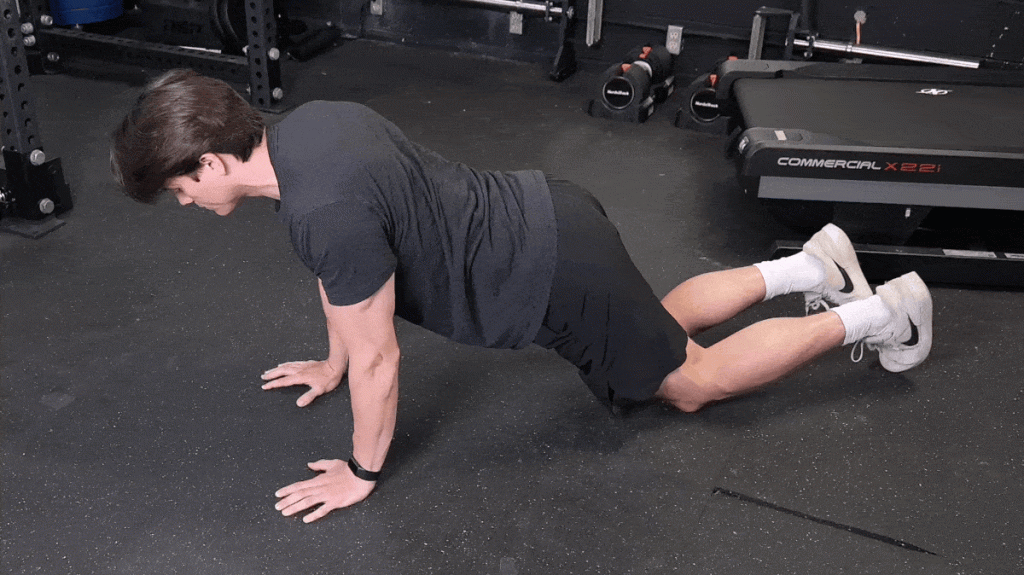
You’ll want to start by finding and mapping out a workout plan. You should answer these questions: How many days a week will you train? What muscles will you work on each day? What exercises are hardest? (You’ll want to to do those first.). How will you progress each week? (Usually, you’ll do more reps.)
8. Jogging
There isn’t really a difference in terms of jogging vs. running. They’re the same exercise, but jogging usually refers to running at a slower speed — Nike cites jogging speed to be between 4 to 6 miles per hour. (5)
The benefits of jogging are the same as running: Better cardio, stronger legs, and reduced feelings of anxiety. (3) Jogging and strength training can even go hand-in-hand to improve your lifts. You won’t burn as many calories since you’re running slower, but you can still expect to torch between 570 and 670 calories per hour.
We suggest following Dickson’s running advice from earlier in this article: Alternate between 60 seconds of brisk walking and 20 seconds of jogging. The next week, increase your jogging time to 30 seconds and then 45 seconds the week after. If you want to switch it up, check out some of our favorite treadmill workouts for weight loss.
9. Weightlifting
Although lifting weights doesn’t burn as many calories as other exercises on this list — only 400 to 500 per hour — it can have a long-lasting effect on one’s ability to lose and keep weight off.
“Weight training is perhaps the most valuable use of your time in the gym if you’re trying to lose fat,” says Dickson on weightlifting for weight loss. “Lifting accomplishes what aerobic exercise alone cannot; it helps you to build muscle… too much cardio coupled with a low-calorie diet and no strength training is a recipe for muscle loss.”
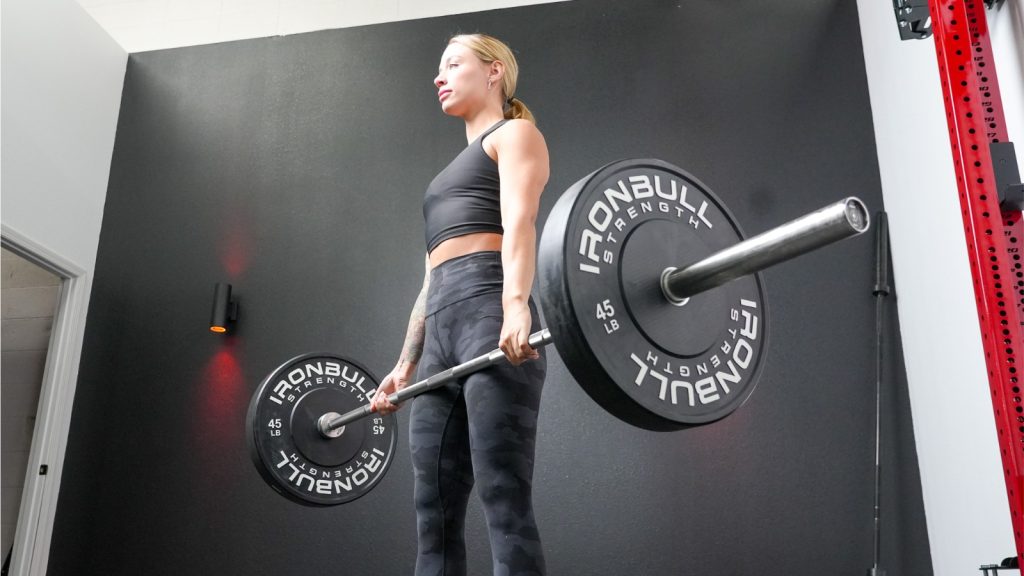
Muscle tissue burns more calories than fat at rest, according to the Mayo Clinic, so the more muscle you have relative to body fat (known as body composition), the more calories you’ll burn at rest daily. (6) The difference is admittedly marginal, so while more muscle mass will, over time, help you shed fat more easily, you should still track your calories and focus on burning calories through increased activity.
As for how often to lift? “By incorporating two or three lifting sessions per week — and keeping your protein intake high — you can spare your lean tissue while shedding fat, provided you stick to your calorie deficit,” Dickson adds. Check out our picks for the best dumbbell exercises to help you get started.
Other Considerations for Exercise for Weight Loss
Losing weight boils down to expending more energy (calories) than you consume. The best way to achieve and maintain sustainable weight loss is to simultaneously reduce your input (i.e., calories) and increase your energy output (i.e., exercise). Below, we go over three major factors to consider during your weight loss journey.
Stay Consistent With Working Out
You won’t execute your diet and training program perfectly every day. However, a missed workout or a high-calorie meal won’t blow up your progress if you don’t let it.
“Over the course of, say, a month, one or two off-track days don’t move the needle very much,” says Dickson. “You should notice a consistent gradual trend provided you’re sticking to your diet plan and exercise routine overall.”
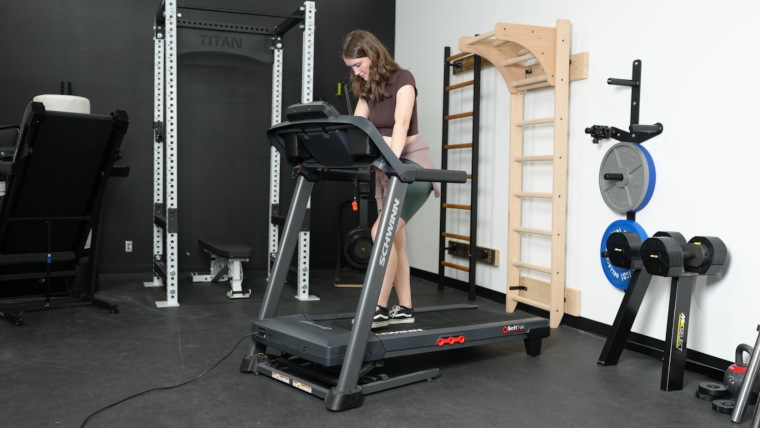
You especially want to consider consistency when creating fitness goals and building a workout program. For example, if you want to lose 20 pounds, you’ll see better long-term success if you take a slow-and-steady approach of losing 1 pound weekly. Your caloric deficit won’t be as aggressive (only a few hundred calories), so you won’t feel as fatigued or restricted. As for your workout program, be realistic about how often you can and want to train. A six-day workout split may seem intense and effective, but it won’t do you any good if you skip half your workouts.
When creating a program, consider the FITT principle: frequency (how often), intensity (how hard), time (how long), and type (what activity). If you play a sport or have other hobbies outside of lifting, a three-day or four-day split may be more manageable for you. That’s fine — just ensure you’re training with the right intensity and frequency (more on that below).
Below are some other tips from Dickson that you can follow to help you stay consistent with your training and eating.
- Don’t throw the baby out with the bath water. If you have a day where things go off track, don’t resign yourself to impulsive eating or skipping your workout altogether. One high-calorie meal, a few alcoholic beverages, or a brief workout aren’t worth worrying about as long as you get back on track quickly.
Decide How Often To Work Out
At this point, you’re probably asking yourself, “How many days a week should I work out?” Really, you can work out every day — a workout being a weight-training session, a run, a walk, or even a bout of stretching. You can and should move in some way daily to keep your energy expenditure high.
“Personally, I’ve had success managing my own weight and helping my personal training clients by taking an approach centered around ‘littles’ and ‘lots’,” Dickson explains. “You don’t need to grind yourself to dust in the weight room six days a week to lose weight. Performing lots of ‘easier’ exercise, such as walking, housekeeping, gardening, or playing recreational low-impact sports is a stellar way to burn piles of calories without feeling fatigued, run down, or straining your joints too much.”
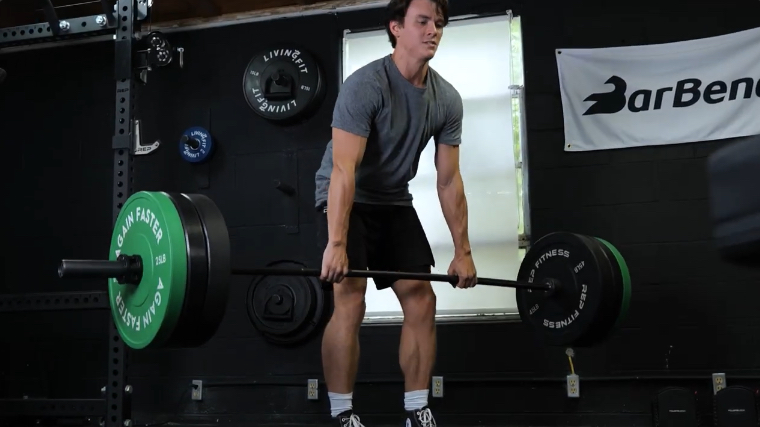
When discussing weight training specifically, how often you train (exercise frequency) is less important than ensuring you target your muscles with the appropriate total volume. In 2021, researchers published a paper outlining tenants of training for hypertrophy (aka muscle growth). Notably, the researchers said that training a muscle group multiple times per week versus a single time per week has the same muscle-building effects, as long as the overall volume is the same. (8) As for how much volume you need, aim for 10 sets per muscle weekly. How you want to get there is entirely up to you.
“For a blanket recommendation,” says Dickson, “I suggest starting with three vigorous resistance training sessions coupled with five to seven low-intensity cardio sessions, which can range from the activities outlined above to simply hitting your daily step count.”
Don’t Forget Your Diet
You can train harder than ever, but if you’re not paying attention to what and how often you’re eating, you’ll be spinning your wheels in the mud.
To lose weight at a sustainable and healthy rate, we suggest subtracting 500 calories from your maintenance level of calories. Or you can plug some basic info into BarBend’s macro calculator to find your ideal macros for fat loss and muscle gain. Also, we suggest consulting with a dietitian to help you construct a plan to achieve a healthy weight.
“When it comes to weight loss diets, there are only a handful of things that matter: Your total daily calorie intake and how much protein you consume each day,” says Dickson, who cites a landmark study from 2020 on different types of diets. The study included over 100,000 participants and tells us that most types of diets work similarly well in the short term as long as they create adherence to a calorie deficit. (9)
“I’m a big proponent of a high protein intake while following a weight loss regime,” says Dickson, who praises protein for its ability to help you feel fuller and preserve muscle mass. “As long as you’re holding true to a calorie deficit and upping your protein intake, you can assemble your weight loss diet to suit your needs and preferences.”
Final Word
Losing weight and burning belly fat takes time and a multi-pronged approach to managing your energy balance by choosing the right exercises, practicing proper recovery, and eating in a caloric deficit.
This list of the best exercises for weight loss can provide multiple avenues to explore as you begin your weight loss journey. Remember, though, that sustainable fat loss for athletes and non-athletes alike takes time, commitment, and a healthy balance of cardio and strength-training exercises, not to mention a healthy diet. There’s no magic bullet or one right path to weight loss, so be patient, listen to your body, and give yourself plenty of grace as you ease into a routine.
FAQs: Best Exercises for Weight Loss
What workouts burn belly fat?
No specific form of exercise burns belly fat — spot fat reduction is a myth. To burn belly fat, you need to consistently be in a caloric deficit, which is achieved by consistently exercising, eating the correct portions, and staying generally active. Honestly, just try walking more.
Is it true that your body will continue to burn calories 24 hours after a HIIT workout?
Technically, yes. High-intensity interval training will raise your metabolic rate, leading to more calories burned. However, one study that looked at the phenomenon noted that the effect was non-statistically significant. (10) In short, don’t lean on HIIT training to aid your fat-burning efforts or weight loss goals. Adherence to regular exercise and a smart diet plan is all you need.
Is exercising 30 minutes a day enough to lose weight?
Yes… although that depends on how many calories you’re burning daily versus how many calories you’re consuming. If you’re eating in an intentional deficit, then the extra 210 minutes of movement per week will certainly help you lose weight and keep it off.
What workout burns the most fat?
No particular workout burns more fat than another. Some do, however, burn more calories. Running at a six-minute-mile pace torches the most calories — about 1,300 per hour.
How can I lose 5 pounds quickly?
Move more and eat less. If you’re eating a caloric deficit of 500 calories, try eating in a 1,000-calorie deficit. Also, try to walk between 10,000 and 15,000 steps per day. Be warned, though, that while many can handle this protocol, it is extreme. Don’t try this for more than one month and always consult with a doctor before trying a new diet.
Can I lose noticeable weight in two weeks?
Not really. If you ate in a 1,000-calorie deficit, you’d lose an average of 2 pounds per week, so 4 pounds in two weeks. For most people, that amount of weight loss won’t yield any noticeable physical changes.
What are some low-impact exercises to burn calories?
The best low-impact exercises to burn calories on the list above are cycling, walking, and swimming.
References
- Exercise: How much do I need every day? (2023, July 26). Mayo Clinic. https://www.mayoclinic.org/healthy-lifestyle/fitness/expert-answers/exercise/faq-20057916
- Harvard Health. (2021, March 8). Calories burned in 30 minutes for people of three different weights. https://www.health.harvard.edu/diet-and-weight-loss/calories-burned-in-30-minutes-for-people-of-three-different-weights
- Oswald F, Campbell J, Williamson C, Richards J, Kelly P. (2020). A Scoping Review of the Relationship between Running and Mental Health. Int J Environ Res Public Health. 17(21):8059.
- Ozaki H, Loenneke JP, Thiebaud RS, Abe T. (2015). Cycle training induces muscle hypertrophy and strength gain: strategies and mechanisms. Acta Physiol Hung; 102(1):1-22.
- What’s the difference between running and jogging? (n.d.). Nike.com. https://www.nike.com/a/running-vs-jogging-benefits
- Metabolism and weight loss: How you burn calories. (2022, October 8). Mayo Clinic. https://www.mayoclinic.org/healthy-lifestyle/weight-loss/in-depth/metabolism/art-20046508
- Chaudhry, U.A.R., Wahlich, C., Fortescue, R. et al. (2020). The effects of step-count monitoring interventions on physical activity: systematic review and meta-analysis of community-based randomised controlled trials in adults. Int J Behav Nutr Phys Act; 17:129.
- Schoenfeld, B., Fisher, J., Grgic, J., Haun, C., Helms, E., Phillips, S., Steele, J., & Vigotsky, A. (2021). Resistance Training Recommendations to Maximize Muscle Hypertrophy in an Athletic Population: Position Stand of the IUSCA. International Journal of Strength and Conditioning; 1(1).
- Ge L, Sadeghirad B, Ball G D C, da Costa B R, Hitchcock C L, Svendrovski A et al. (2020). Comparison of dietary macronutrient patterns of 14 popular named dietary programmes for weight and cardiovascular risk factor reduction in adults: systematic review and network meta-analysis of randomised trials. BMJ; 369
- Greer BK, O’Brien J, Hornbuckle LM, Panton LB. (2021). EPOC Comparison Between Resistance Training and High-Intensity Interval Training in Aerobically Fit Women. Int J Exerc Sci ;14(2):1027-1035.